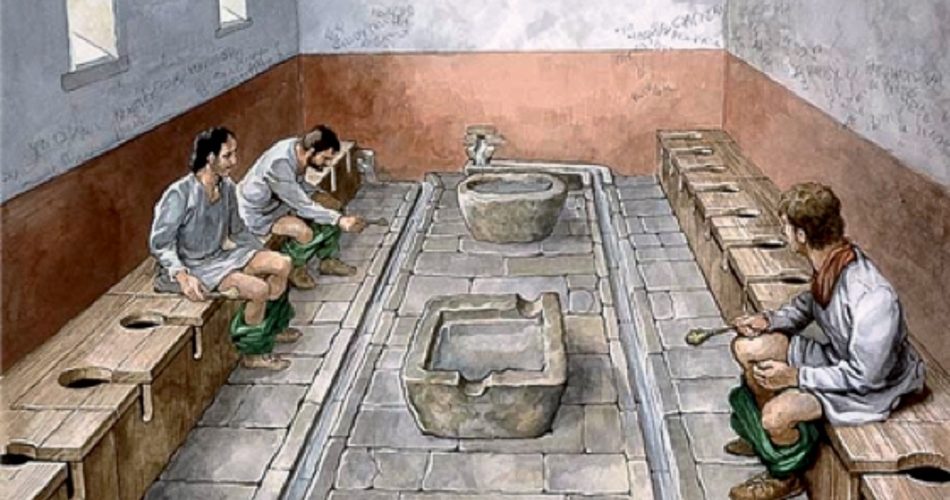From then to now
It’s the most visited place: some go there just for need, others for pleasure; some stay there as little as possible, and others, instead, spend hours there. If today we take for granted the presence of the bathroom with all its fixtures such as bidets, sinks, showers, and bathtubs; it wasn’t so for ages, because once, the bathroom was only reserved for a few.
Before the bathroom was invented, the first communities used to live along water streams and did their needs where it happened, without any problem. There was no taboo and embarrassment about that and for everything revolving around the toilet, morality around toilets arrived later. Only in the third Millenium B.C., in Mesopotamia, the ancestors of the toilet consisted of a simple slab of rounded stones on which people used to squat for their needs. Then, when the first cities were born, some rough organic waste channeling systems were invented, in places like China, and Egypt, from the Indus Valley to Creta.
In Knossos, the royal palace was already equipped with advanced plumbing systems with piping made of terracotta, and bathtubs, but also a toilet with a wooden seat and ceramic bog.
Greeks built big public bathrooms with thermae and latrines throughout the empire, inspired by the Roman baths. Roman baths, called balnea, were like real spas with swimming pools, steam baths, and gyms; all heated by underground wood-burning ovens. Balnea were accessible by everyone because they were quite cheap, even though men and women had separate entrances. Inside them, it was also possible to enjoy massages with oils and ointments. Baths were almost a regular appointment after work, as relaxation, but also as a moment of socializing.
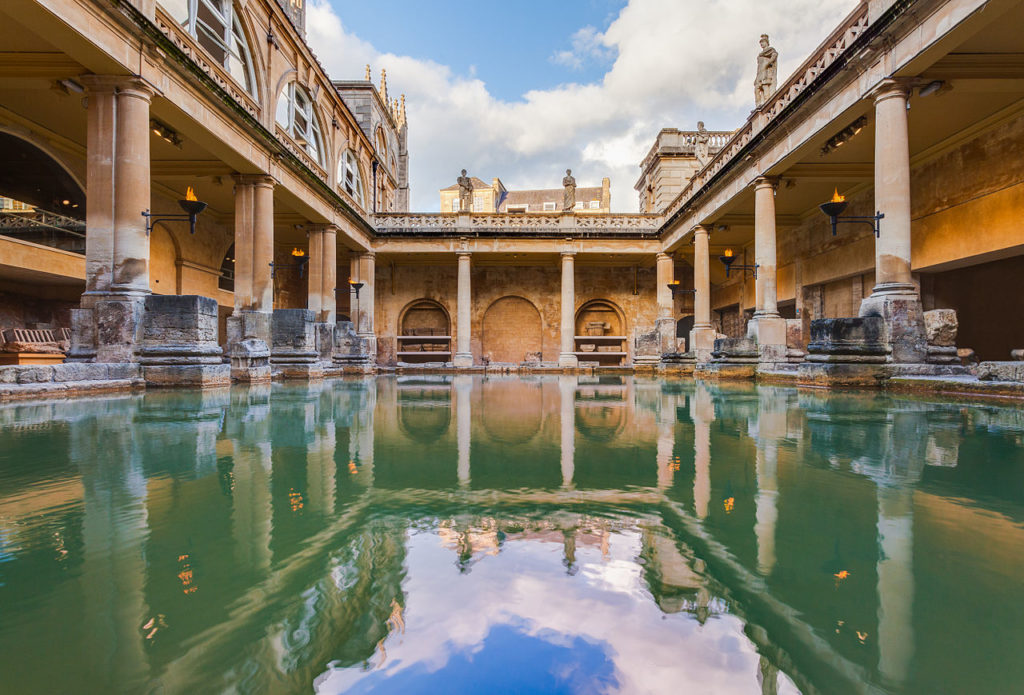
At the thermae, there also were the so-called latrines, consisting of benches made of stone with a hole in the center, one next to the other, arranged in a circle where it was possible to do one’s needs as in a classic toilet. Those latrines were connected to sewers that were already very efficient.
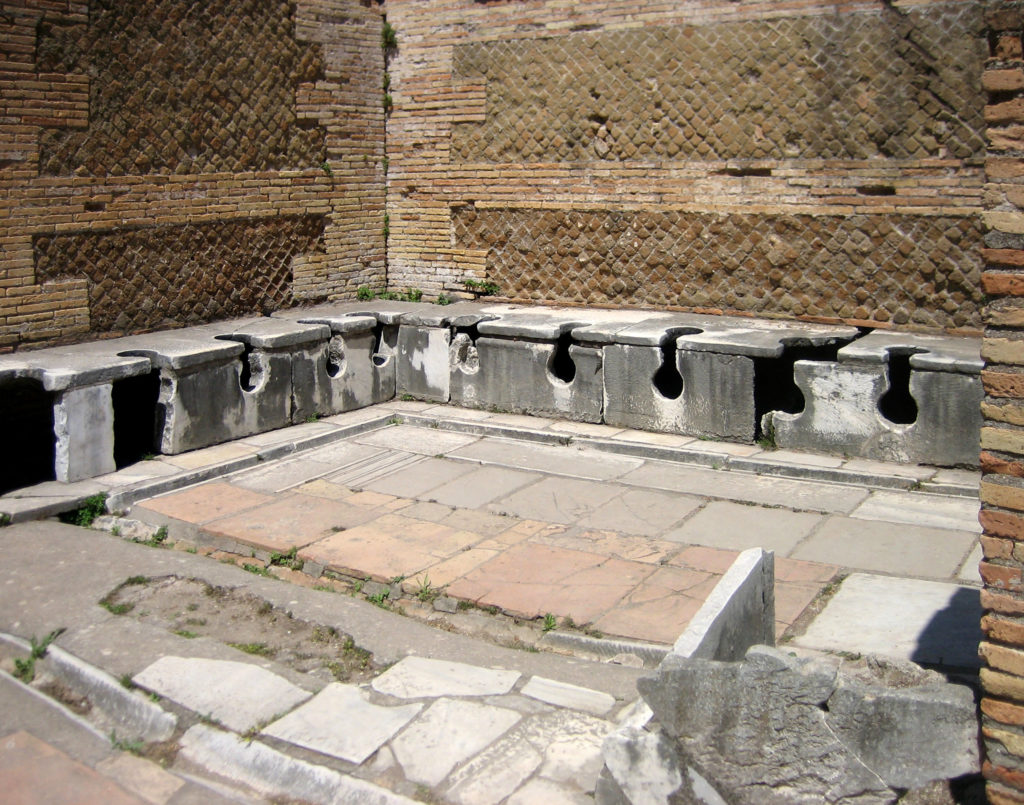
The ‘poop time’ was a social moment where people used to talk to each other without worries or embarrassment. They all would clean with the tersorium (a sponge connected to a stick) which we could define as the ancestor of the toilet paper even though it looked more like a toilet brush. The curious thing was the fact that the same tersorium was used by everyone after rinsing it in special channels of running water.
A change, however, occurred during the Medieval period because Church began to consider baths something sinful. It’s maybe from here that the first taboos, which have led to considering the bathroom something private and embarrassing, started.
Nevertheless, the crusader’s expeditions in the Middle East allowed the spread of the so-called ‘stoves’ which were similar to saunas, of which the Arab world was the master. Arabs were also the creators of the current soap. In Europe, the trend of the bath was mostly confined to higher social classes and it was intended as entertainment rather than for cleaning. So, in such moments people used to eat as they were immersed in the tub, but also accompanied by musical performances. Latrines, inside the noble castles, for example, were recessed into the walls from which they then drained into the ground below.
Thermaes and public baths began to disappear between the 15th and the 16th centuries because people started to believe that hot baths, by dilating the pores, encouraged infections. So, Kings and Queens preferred to cover themselves with perfumes and wash with sponges of ethyl alcohol. As a toilet instead, they used commodes, namely perforated seats with a chamber pot inside, which were usually padded and decorated. The rest of the people used simple chamber pots instead.
The first prototype of a toilet was invented at the end of the 16th century by Sir John Harington for Queen Elisabeth I. It consisted of a sort of sanitary pan with an opening at the bottom, closed by a valve connected to a tower cistern. When the valve was operated, a sort of flush was obtained, but it was soon abandoned because it released an unbearable smell.
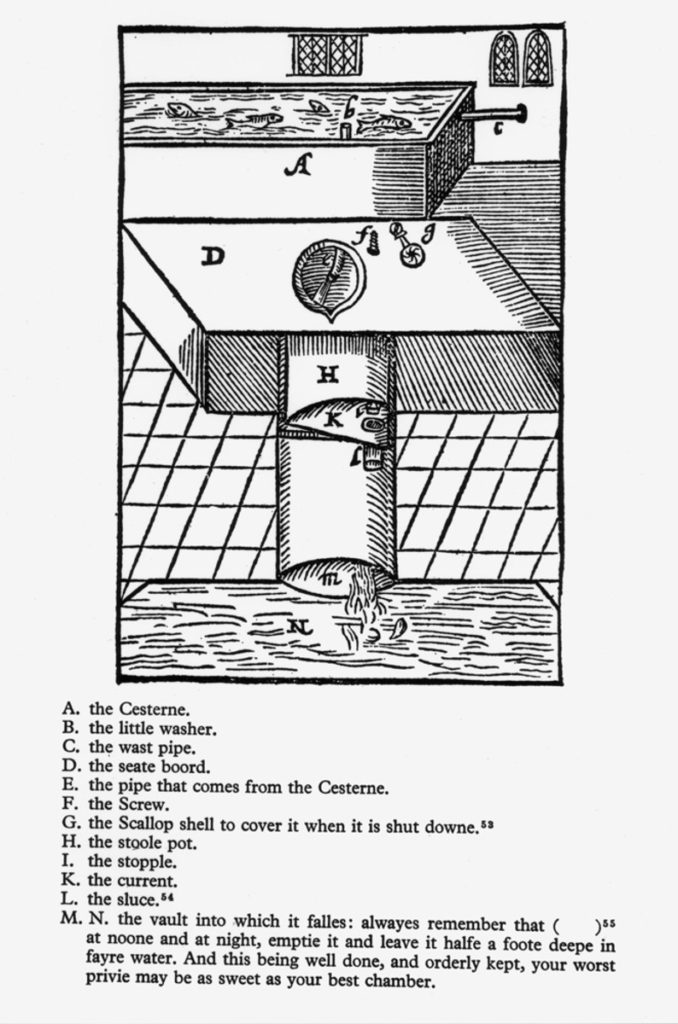
Between the 1600s and 1700s, nobody used to wash.
In 1767, the Englishman William Feetham invented the mechanical shower which, thanks to a pump, pushed water into a container and by pulling a chain, the water could fall. This prototype was later modified by the French Doctor Merry Delabost in 1872 who introduced a system of a group of showers for prisoners.
In the 18th century, things changed, and water began to be considered important for health, so hydrotherapy plants were implemented.
The WC (Water Closet) was first invented by Harington, then improved by Scotsman Alexander Cummings in 1775. To the initial idea, Cummings added a siphon (a U-shaped pipe), which by holding some water at the bottom of the bowl, stopped odors.
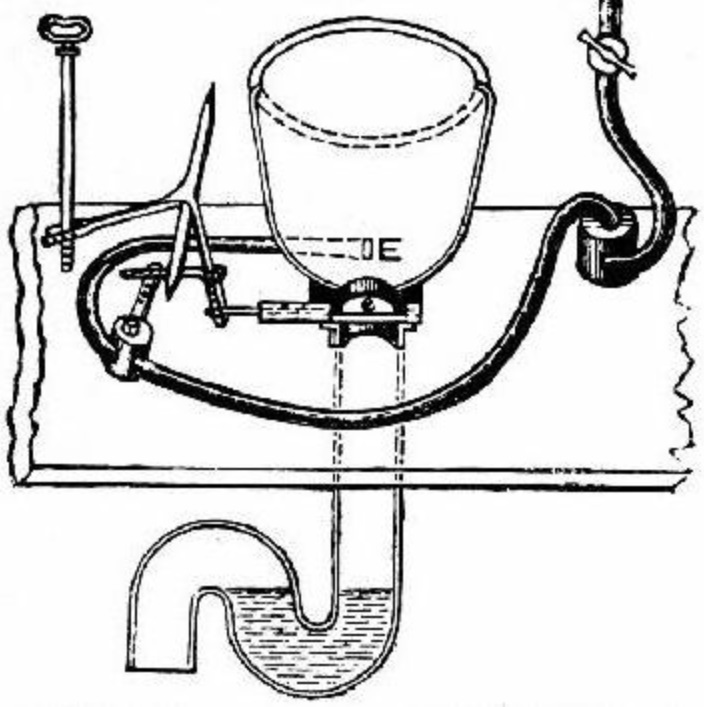
Then came the bidet, used in the aristocratic houses and the whorehouses for the personal hygiene of the prostitutes.
Despite everything, sanitary conditions were still precarious in 1830. Only after the cholera epidemics, things really changed since it was required to have toilets in the houses: there were new sewage systems, and companies started producing toilets, sinks, and bathtubs. Later, thanks to the water network, water running was available and the first water heaters appeared. So, in the 20th century, the bathroom became more and more a comfortable place, especially after WWII with the introduction of toilet products such as soaps, lotions, razors, and perfumes.
Today the bathroom has become not only a place to relax, but also a smart place, gradually including the technologies that we are used to seeing in the rest of the house, such as speakers to listen to music, but not only. Who knows how it will evolve in the coming years. Maybe it will become a place of socialization again, even though, perhaps, it already is, through smartphones.
Source M. Manzo, La lunga storia del bagno, in «Focus», 333 (2020), pp. 90-94

